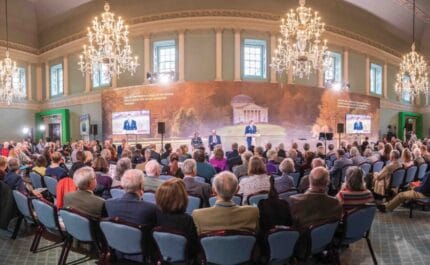DG #52 preview: What lies beneath
A preview of our story about the sinking of the MS Estonia from issue 52 of Delayed Gratification

A section of a bow ramp from the wreck of the MS Estonia is loaded on board the Viking Reach ship as part of the investigations into the 1994 sinking of the ferry. Photo: MAGNUS LEJHALL/TT NEWS AGENCY/AFP via Getty Images
The 52nd issue of Delayed Gratification features an in-depth article by associate editor James Montague about the sinking of MS Estonia, Europe’s worst maritime disaster since the Second World War, and why it’s still such a sensitive topic 29 years later. Here, Matthew Lee speaks to James about his reporting from Sweden and Estonia.
Matthew Lee: What was the MS Estonia and why are people still talking about it today?
James Montague: The MS Estonia was a passenger ferry travelling between Estonia and Sweden that sank in rough seas in 1994. Almost 1,000 people were on board and more than 800 people died, most of them Swedes. I remember seeing it on the news at the time, the sheer scale of the loss of life was just unfathomable. How could a ferry sink so quickly and kill so many people?
ML: Why do you find this story so fascinating?
JM: The scale and size of the tragedy was one thing. But in the 1990s and 2000s I would often come across writings about the disaster on fringe websites. A whole web of conspiracy theories had sprung up around it. The official investigation concluded that the bow visor, the front of the ship which could be raised to allow cars and cargo into the car deck, failed and fell off, allowing water to gush in. Not everyone believed that conclusion, including many of the survivors and the families of those who died. Alternative theories have been swirling around for years, some of which have been proven to be true. And then in 2020 a Discovery Channel investigation, which illegally sent a camera down to the wreck, found a massive previously unrecorded hole in the hull. The tragedy remains an open wound in Sweden, and the programme was a sensation. What could it have caused the hole? A missile? A Russian sub? A new government investigation was opened but then the story took another turn once I reached Sweden, and then Estonia.
ML: How did you find your interviewees in Stockholm and Tallinn – and was it easy finding people who would talk on the record?
JM: People were mostly quite open. There aren’t many people who survived, 137 in total. But I spoke to one. It was a conversation I will not forget, not just for his vivid description of how he escaped, but his honesty in coping with the aftermath of surviving the tragedy. Almost everyone I spoke to was quite guarded when I first contacted them. There’s a lot of people obsessed with the case, and the survivors have often been bombarded with emails or phone calls in the past, so I had to first assure them I wasn’t some kind of fantasist.
ML: Do you think we will ever know for sure what happened on that night in 1994?
JM: I think we do now know what happened. But this story wasn’t about finding the definitive cause of the accident. We live in an age of conspiracy theories being a central tenet of many elected officials’ political programmes, so even with all the evidence pointing one way, some still won’t believe it. It’s about the malleability of truth and experience, and how that has long-term effects on those recovering from a tragedy of this scale. It’s also about how alternative theories take hold and flourish. In this case, you can point to a wholly unprepared Swedish state which made a series of decisions that unintentionally gave rise to questions about whether the official narrative could be believed. Many contend that there is still more we don’t know about the sinking of the MS Estonia, pointing to the fact that some stories around the sinking that were initially derided by the government as conspiracy theories later in fact turned out to be true. Thirty years on and the interest in, and questions around, the sinking of the MS Estonia only seem to grow.
You can read the full feature by James Montague in issue 52 of Delayed Gratification, available from our online shop here.
Slow Journalism in your inbox, plus infographics, offers and more: sign up for the free DG newsletter. Sign me up
Thanks for signing up.








